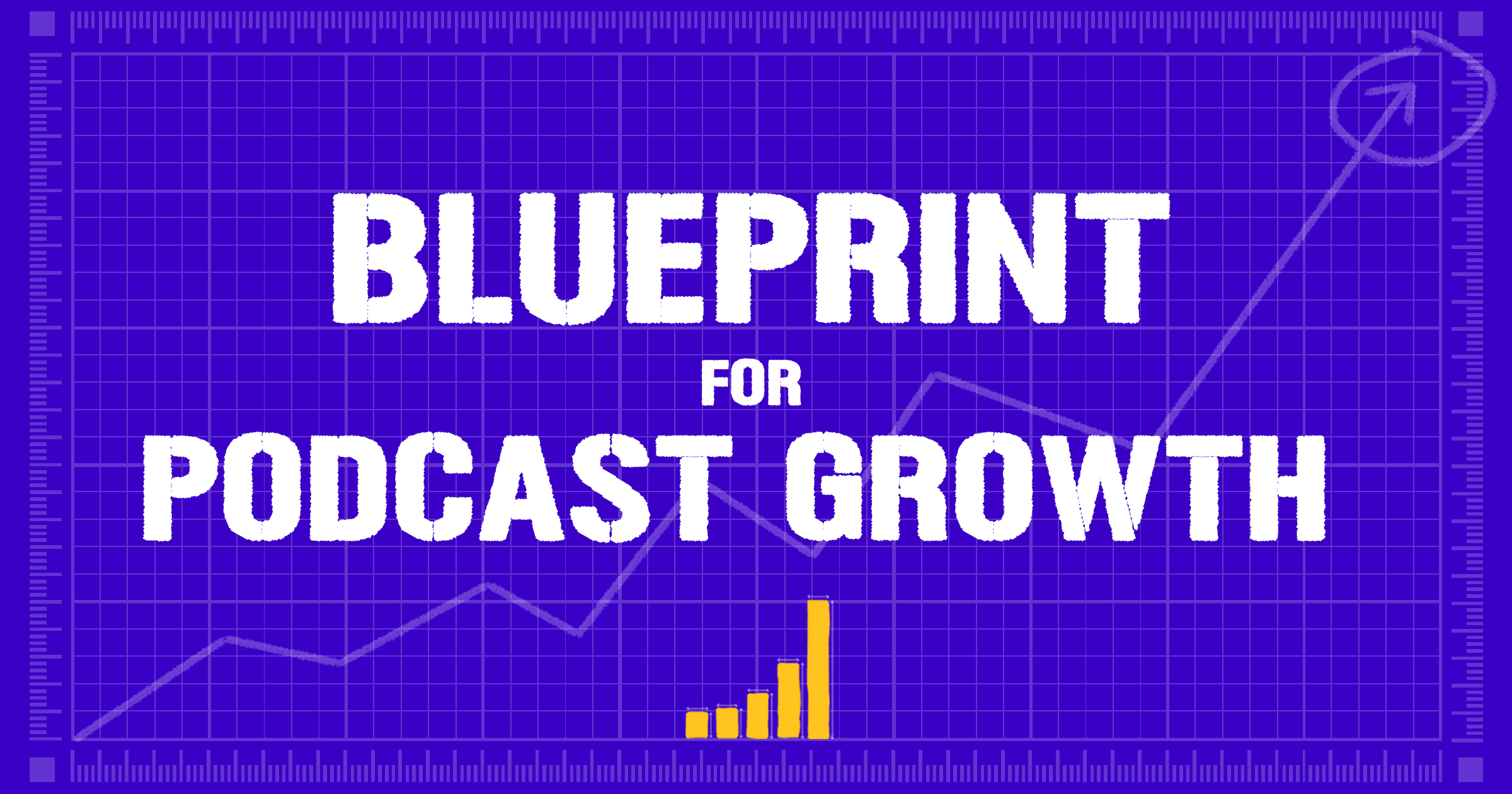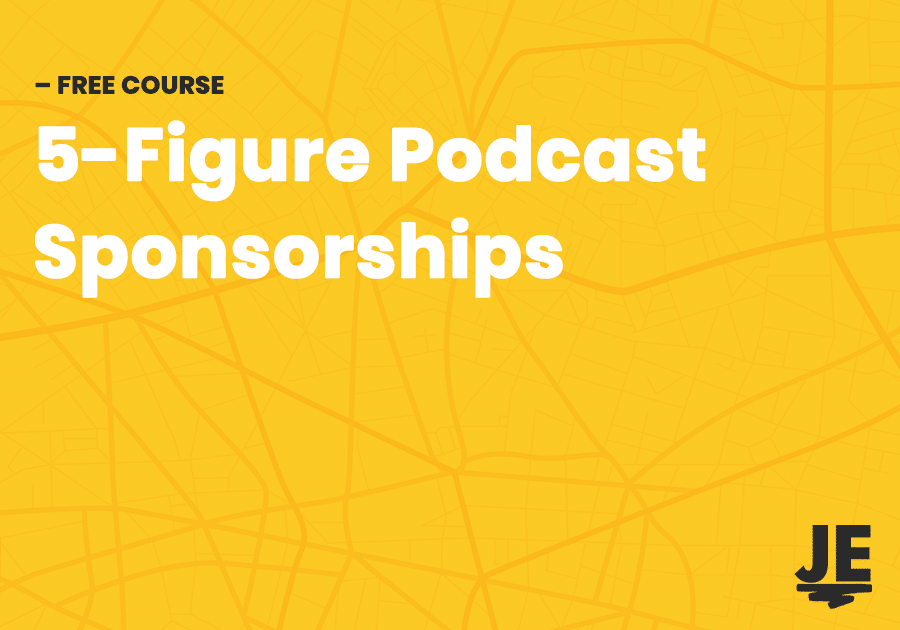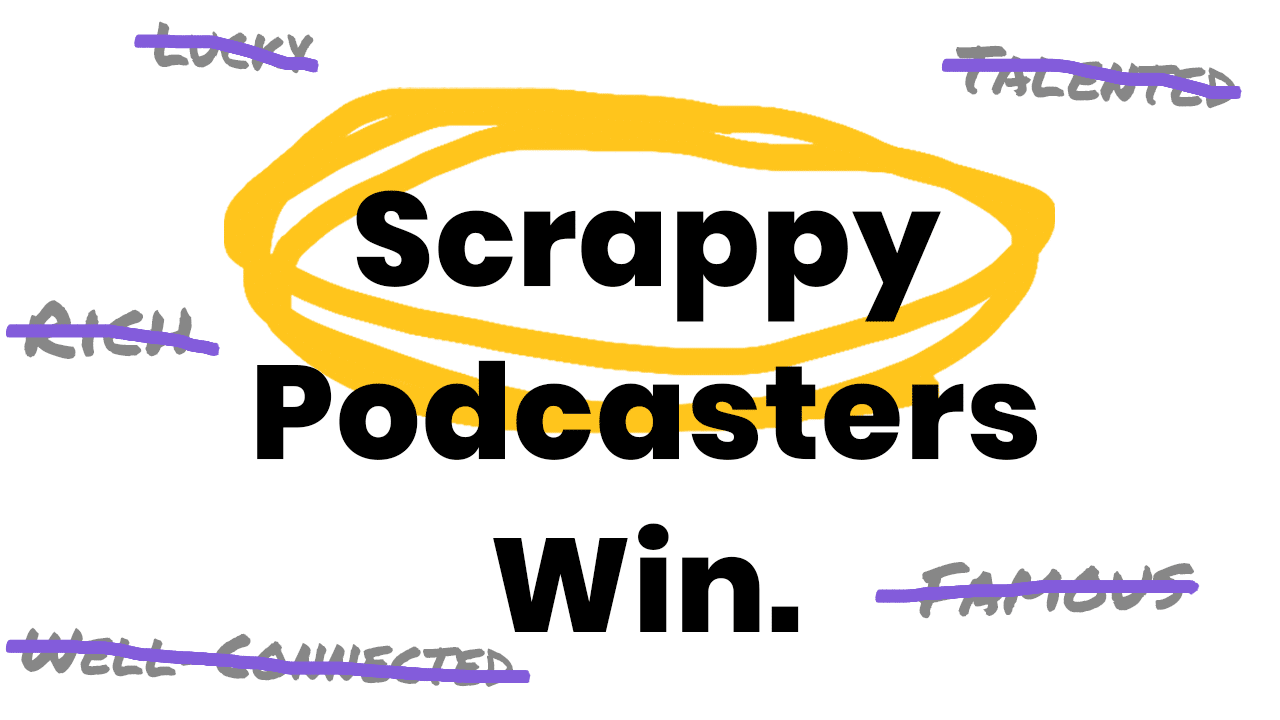Today on the blog I want to share a case study from a friend and client of mine’s recent podcast launch, and how we were able to orchestrate what we’ve determined to be a very successful launch.
So to start, let’s get into some context and establish the framework with which to view this launch, as opposed to the launch of a different type of show in a different niche.
One note before we get into the article. A lot of the principals behind this launch, and almost ANY launch of any kind of online product have their root in the absolutely FANTASTIC book Launch, by Jeff Walker. I highly recommend picking up a copy on either Amazon or Audible. I’ve already listened to the audiobook multiple times, and will do so many more times in the future.*
* Those are affiliate links yo! As with anything I recommend though, this book has helped me immeasurably and I truly believe it can help you too.
Show Details & Context
First things first, the show is called Motion Hatch, and is hosted by my friend Hayley Akins, a London-based podcaster, with an amazing London based accent. The show is designed to help other motion designers and animators run better freelance businesses, sharing information, inspiration, and insight into a side of the industry that individual freelancers (especially creatives) are often unaware of how to handle.
As you can probably tell, this is most definitely a niche podcast. I don’t know about you, but I know a total of one motion designer. Yep, that’s our wonderful host with the wonderful accent, Hayley.
Clearly, there’s not enough mass appeal with this show to land it anywhere near the top of the iTunes charts, but as we’ll get into later in the article, that doesn’t mean that it can’t be a successful podcast, and indeed, it even grants the show certain benefits.
Other details about the show are that it’s a bi-weekly interview-based show, although for the first month after launch we’re releasing six episodes total, plus an intro episode to boost total downloads and give people a chance for people to get a feel for the show right off the bat.
* If you’re curious, we launched with a short intro episode & 3 full-length episodes on launch day, with weekly episodes for the rest of the first month.
Goals
We’ve talked before about how podcasting success can look wildly different for every show, and every podcaster, and that in order to establish any metrics to shoot for, you need to know what your ultimate goals of the podcast are first.
In other words, what role is the podcast playing in your business?
For Hayley, as for most people, the podcast is to function as the wide end of her funnel. A way to gain exposure to her audience and get them familiar with her while sharing some amazing content, but ultimately moving them towards a deeper relationship, hopefully, one that involves them purchasing a product or service she’s offering.
In this case, long before the podcast ever came into existence, Hayley was envisioning Motion Hatch as a community of motion designers and animators working to improve their businesses, and their lives.
The podcast then, was (and is) the way to introduce as many people who resonate with her message as possible, to that community. Ultimately, the goal is to monetize a subset of the existing free community with more in-depth and hands-on offerings, as well as digital products, advertising, and more.
Let’s Talk Launch Numbers
Ok, so having established the context and goals of the show, let’s have a look at some of the numbers from the first week of the podcast’s existence.
Keep in mind that these numbers might look crazy high or crazy low depending on the niche you’re in, but for us, we’ve been really happy with the reception thus far. Also keep in mind that total downloads are spread over four episodes (intro + 3 full episodes), so they don’t indicate the number of unique listeners.
Launch Week Numbers
Intro: 220
Ep 1: 486
Ep 2: 432
Ep 3: 710
Total Downloads: 1850
It’s hard to know the exact number of unique listeners, but I would guess it to be somewhere in the 750 range. I don’t know about you, but for a niche podcast like this without a preexisting platform to build upon, I view that as a big win.
What’s more, the actual community of Motion Hatch – in one sense the reason the podcast exists – shot from 150 to over 400 members, and is quickly growing. Tied closely to that, Hayley’s all important email list grew significantly as well, which will pay huge dividends down the road.
In case you’re curious, the day with the highest total downloads was, as expected, launch day, with 661 total downloads, although every day from Monday to Friday had well over 100 downloads, and all except Friday over 200.
* Podcasts in general are consumed most heavily during weekdays, and weekends often see large drops in downloads.
Breaking Down The Strategies
Alright, so as much as I would like to take a healthy dose of credit for the success of the Motion Hatch launch, the bulk of it goes to Hayley. I gave her some guidance, ideas, and helped her understand the general strategy, but she took it from there and ran with it.
This is actually great news for everyone out there looking to launch a new show. As we’ll get into, while it took a fair amount of work and planning, Hayley already had the makings of a successful launch, based on her existing experience and connections.
I’m guessing you do as well, even if you don’t know it yet.
1. Leveraging Your Existing Connections
So while this is Hayley’s first dive into the world of content marketing and online business, the show is about an industry in which she has 10 years of experience. And as you might expect, in those 10 years of working in the motion design world, she’s made a lot of connections.
As the launch grew closer, she made sure to share regular updates about what she was working on with that network, whether over drinks at the pub or on any of her various social media platforms, in her case predominantly Twitter and Facebook.
This actually resulted in a considerable buzz of anticipation from her industry friends and connections who were aware that the podcast was being launched, which is always a good thing. We’re going to get into how to utilize that buzz coming up.
Notice that Hayley was focussing her hype building not on her friends (most of which probably couldn’t care less about a motion design business podcast…) but on industry contacts, colleagues, and connections who the podcast was actually designed for.
While there was certainly some buzz with some of her connections, on launch week, Hayley spent a significant amount of time reaching out to many of her friends and contacts in the industry with individual messages, letting them know that the podcast was out, and how they could support it (subscribing/rating/reviewing), and notifying them about the community she’d started around it as well.
I also want to point out here, that if you are in some super-niche and don’t know ANYONE at all who’s also interested in it, I would take some time in the weeks and months leading up to your launch and seek out some other people in the scene, whether online or off and start building relationships with them.
Not only will you be getting to know some potential listeners and evangelists for the show, but you’ll also gain a deeper insight into what your audience would see as valuable podcast content, and how you can give it to them.
2. Making The (Big) Ask
One of the issues a lot of podcasters struggle with at the start is the insecurity around reaching out to potential guests whom they feel are out of their league. In this case, there was one guest in particular who Hayley went back and forth on whether or not she should reach out to him in the weeks leading up to the launch, to see if he would be a guest on the show.
With some encouragement, she ultimately did reach out and in fact he quickly agreed to come on the show. But the story doesn’t end there.
After their Motion Hatch interview, this guest who is the host of probably the biggest Motion Design based podcast out there offered to connect Hayley to the hosts of another big motion design podcast. All of a sudden, she had connected and formed a relationship with a handful of the top influencers in the industry.
Sure, she could have waited until she had 20 episodes under her belt to reach out, and may have had the same results, but she would have missed out on some big promotion and more important relationships in the meantime.
My advice: Always make the ask. If they say no, you can ask again in 6 months or a year, but you’d be surprised by how many “yeses” you’ll get just by asking.
3. Scheduling & Foresight
Before launching, we had 6 full episodes of Motion Hatch recorded and ready to go. This might not seem all that important at first glance, but it gave us the ability to pick three of those that we thought would get people the most excited, while also setting the tone we wanted for the show in terms of what the audience can expect going forward.
Also not to be overlooked is the fact that as a new podcaster, it’s to be expected that you’re going to learn a lot about conducting interviews and producing the show over the first handful of episodes.
We ended up going with some of the later recorded episodes, not necessarily because the content was better but because we thought the topics of those 3 episodes were perhaps most applicable to the widest swath of the potential audience, and Hayley’s experience through the first couple recordings was already translating into smoother, more purposeful interviews and episodes.
In the end, it might not be a huge deal, but anything you can do to put your best foot forward with your first episodes can be the difference between a subscription and a walk away.
Back-End Systems
Another aspect of the pre-planning process that we were sure to address from the start was setting up the Motion Hatch website, email marketing platform, and lead magnet (free opt-in) to entice people to sign up to the email list. In this case, it was access to the private Motion Hatch Facebook community.
Make no mistake, getting these systems set up and tested, along with choosing your initial episode topics and guests takes A LOT of organization and pre-planning. But getting everything set up and streamlined from the get-go can go a long way to hooking listeners immediately and keeping them coming back.
In all, Hayley and I were working towards the podcast launch for more than 3 months leading up to it. While I’m all for jumping in and starting before you feel like every single thing is perfect, that doesn’t mean coming up with an idea today, recording tomorrow, and launching before the weekend.
Effective launches take planning and tweaking, adjustments and are made up of dozens of disparate parts. Bringing these components together takes time, and if you really care about starting your show off right, you owe it to your podcast to give it that time.
4. The Value of Niche
Way back at the start I mentioned that a really niche podcast might actually provide some benefits when compared to a mass-appeal show.
What became apparent pretty quickly while working with Hayley was that not only was there some buzz among her industry friends and personal connections, but in fact throughout the greater community of freelance motion designers, animators, and illustrators.
While there are a small handful of other dedicated motion design podcasts and blogs, no one was focussing specifically on the freelance and business aspects of the industry, and the fact that such a resource was being created had people excited.
Now, even if this podcast had been broader in scope, covering all aspects of the job and industry, I think the community still would have been excited, as there’s just not that much content out there made specifically for them. You don’t have this advantage of word spreading throughout a community in most niches.
Can you imagine how insanely good a show, and how much marketing would have to go into a new travel or business podcast, for example, to cause a buzz throughout their respective communities???
Actually, I don’t know that it’s even possible at this point in those niches*, unless you were to sub-niche waaaaaaaay down.
* The term niche barely applies at this point for those categories…
This links back to the first point about utilizing your connections, and becomes all the more important if you are podcasting on a niche topic. It might not seem like it at the start, but it’s probably way easier to get people excited than you think, especially if your target audience is extremely well defined and focussed.
5. Coordinating Promotion & the Value of a Launch Team
Alright, so it’s time to wrap all of these factors together into a neat little package.
As I mentioned in the section on making the ask of big guests, Hayley got put in touch with some of the more well-known influencers in the motion design world and was even asked to be a guest on a couple of their podcasts.
Partly due to luck and partly due to planning, we were able to line these interviews up to take place in the week before Motion Hatch’s launch.
If there was a small buzz among her industry friends and contacts before, it was quickly spreading to the broader community in anticipation of the podcast launch.
The Value of a Launch Team
Through this exposure, the Motion Hatch Facebook community grew to about 150 people before the launch of the podcast, giving Hayley what amounted to a nice little launch team. These people were already invested in and excited about the podcast, and through the platform of the FB group, Hayley was able to organize a large chunk of them on launch day to subscribe, rate and review the podcast right off the bat, as well as share it with their own motion design networks.
For you, a launch team might not be a Facebook group, and it might not be 150 people big, but having even a handful of highly committed people in your corner on launch day who are excited to spread the word about your show as far and wide as possible can make a big difference in extending the impact of your launch.
Tools and promotions like Thunderclap can be a great way to reach even more people than you might have otherwise, and while we didn’t use that technique for this launch, if done right they can be extremely effective.
Keep in mind, the people in your launch team should not be your general friends, but rather people active in your niche, hopefully, who are well networked with others in the niche community as well.
Just remember to treat these people well. Give them early access to your episodes, buy them Starbucks gift cards, do something to show your appreciation. But believe me, it’s worth it.
The Value Of Relationships. Yes, Again…
Ok, so I know I’ve talked a fair bit about the value of relationships in a successful, well… anything really. Regardless, we’re revisiting the topic one more time.
Remember that big-name motion design influencer that Hayley hemmed and hawed about reaching out to before he agreed to come on her show and then introduced her to a bunch of other influencers? Well it turns out that this connection (at this point a legit friendship), had one more contribution to make to the launch.
Alongside the podcast and website, he also has a large email list and a big Twitter following. After getting to know Hayley over the podcast and a series of emails, this influencer offered to include her launch in his weekly newsletter which goes out to thousands of motion designers, many or most of whom are podcast listeners.
Knowing this, we coincided the launch of the podcast with the day he sent his weekly newsletter out, and then were left to sit back and watch as the listeners streamed in, and the community filled up.
I think a lot of podcasters starting out view other podcasts in the space as competition, when in fact many of these people might be wholly willing to give you help in ways you wouldn’t even think to ask for. This is especially true if you’re focussing on a topic that they don’t cover in depth.
Seriously. I can’t stress enough the value of reaching out to the well-known names in your space pre-launch, and seeing if they’re open to contributing or lending a hand in any way. Chances are, someone gave them a break at some point and they’ll be eager to pass the goodwill on.
Putting It To Work For You
As you can probably tell after reading through this mammoth post (sorry), there’s a lot that goes into a successful launch, from determining what success looks like, identifying what you’re funneling your audience towards, connecting with anyone and everyone who might be interested months in advance, and on and on and on.
There are a number of smaller strategies that we implemented as well, such as a contest within the Motion Hatch community on the day following the launch to boost the total number of subscriptions and reviews, resulting in upwards of 30 ratings and reviews one day into the podcast’s life.
Again, not too shabby for a niche podcast.
Hayley also created a number of audiograms featuring snippets of the launch episodes and released them throughout the week leading up to the launch, both in the Motion Hatch community, as well as across her social networks. Judging by the comments on these posts, they really did help to build excitement for the launch of the podcast.
I know this is a ton of information, so I’ve compiled the key takeaways onto a handy-dandy cheat sheet that you can pick up below.
Again, if you want to go even deeper into how to set up a successful launch of ANYTHING, including a podcast, check out the book Launch by Jeff Walker on Audible or Amazon. I listened to the book on Audible and took soooooo much away from it. I’ll be reading it many times again in the future.
* Again, these are affiliate links, but that’s not why I’m recommending this book. Like everything I recommend, I’m doing so because it’s helped me, and it’s amazing.
One last note, if you’re reading this the week I’ve published it and you want to hear more about how to put together a kick-ass launch, I HIGHLY recommend you join in our amazing, warm, fuzzy, and funny Facebook community Cut The Bullshit Podcasting
, where we’re having an awesome expert Q&A with Bri Seeley, a truly AMAZING podcaster, author, speaker and all around bad ass on how to launch anything effectively!
- Why Wouldn’t They Just Google It? - March 14, 2021
- Before You Can Market Your Podcast, You Need To Create A Marketable Podcast - March 11, 2021
- Podcast Promotion & Marketing Are Different (Here’s How to Use Each Effectively) - March 10, 2021




